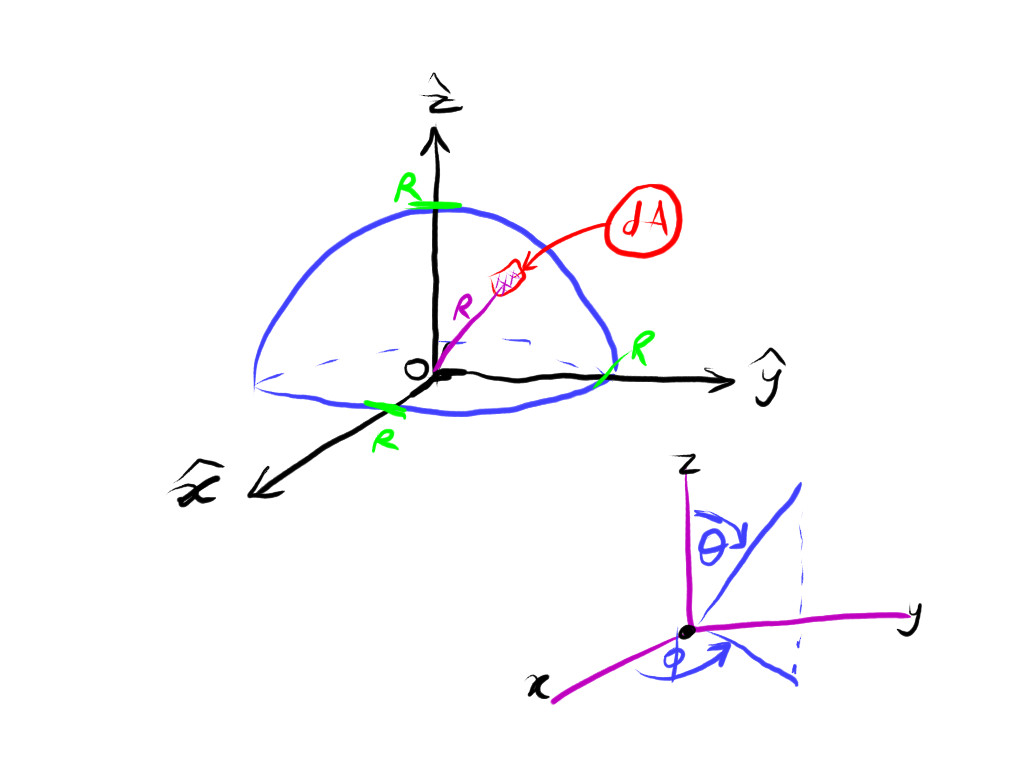The core formula here is that for the electric field due to a point charge, #vec E = k Q / r^2 hat r#, from Coulomb's Law, where #k = 1/(4 pi epsilon_o)# is Coulomb's constant
Let #sigma# be the charge density of the cup. The charge is distributed evenly over the hemisphere so #sigma = Q / (2 pi R^2)#. Using spherical coordinates, a small area element (see sketch below):
#dA = R^2 sin theta d theta d phi#
....has charge
#dQ = sigma R^2 sin theta d theta d phi ## = Q / (2 pi R^2) R^2 sin theta d theta d phi #
# = 1/ (2 pi) Q sin theta d theta d phi #
[Note #theta# is the polar angle and #phi# the azimuth]
If we place the cup so that the centre of the flat surface of the hemisphere is at the origin as illustrated in the drawing, the field at the origin due to that small element is
#d vec E = - k (dQ) / R^2 hat r#
# - k (1/ (2 pi) Q sin theta d theta d phi ) / R^2 \ hat r#
# - (k Q ) / (2 pi R^2) sin theta d theta d phi \ hat r#
.... the negative sign because it acts radially inwards.
Due to symmetry and superposition the field at the Origin along the x - y plane will be zero. The field at the Origin will act in the #hat z# direction so:
#dE_z = d vec E * hat z#
#= (- (k Q ) / (2 pi R^2) sin theta \ d theta \ d phi) \ hat r * hat z#
#d vec E_z= - (k Q ) / (2 pi R^2) sin theta \ d theta \ d phi \ cos theta \ hat z#
#= - (k Q ) / (4 pi R^2) sin 2 theta \ d theta \ d phi \ hat z#
Which leaves us with
#vec E_z= - (k Q ) / (4 pi R^2) int_(phi = 0)^(2 pi) int_(theta = 0)^(pi /2) sin 2 theta \ d theta \ d phi \ hat z#
#= - (k Q ) / (4 pi R^2) int_(phi = 0)^(2 pi) \ d phi * int_(theta = 0)^(pi /2) sin 2 theta \ d theta \ hat z#
#= - (k Q ) / (4 pi R^2) * 2 pi * [ -1/2 cos 2 theta ]_( 0)^(pi /2) \ hat z#
#vec E_z = - (k Q ) / (2 R^2) \ hat z#



